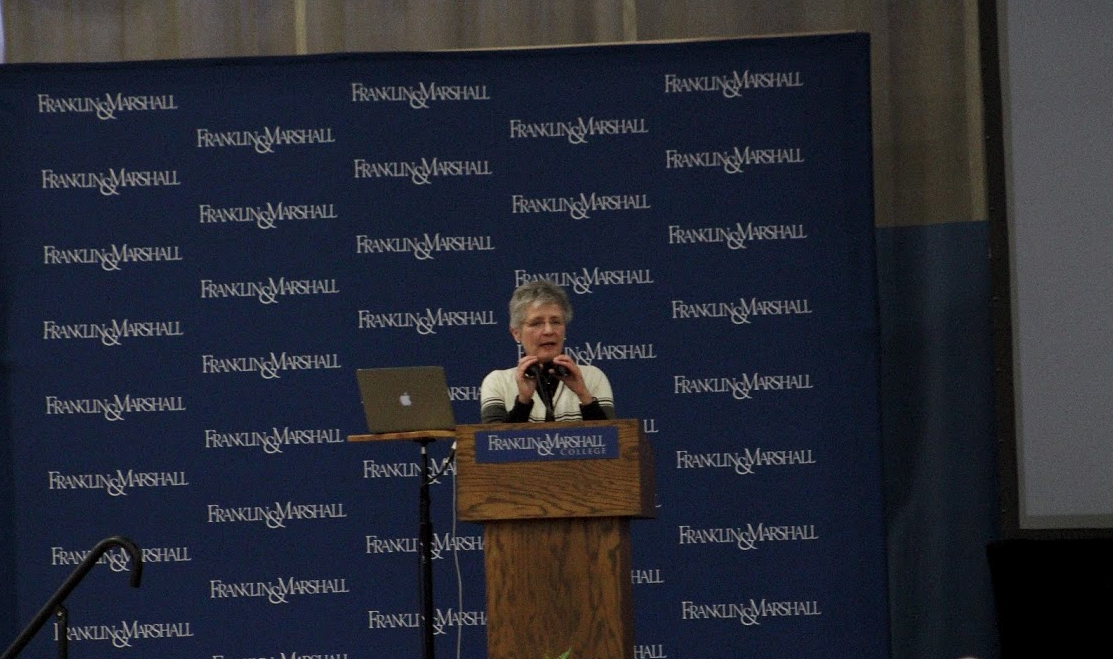By Izzy Schellenger || Staff Writer
This week’s Common Hour lecture was presented by Caroline Bruzelius, a professor of Art and Art History at Duke University. She has received the University’s Alumni Distinguished Teaching Award, and she was the Director of the American Academy in Rome between 1994 and 1998.
Bruzelius is one of the 13 Phi Beta Kappa Honor Society scholars in the nation. Her research focuses on medieval architecture, primarily in France and Spain. Bruzelius’ lecture demonstrated the role of the Gothic cathedral as a part of an urban, medieval network.
Bruzelius began her talk by describing the traditional way that people view cathedrals. People see cathedrals as an expression of the Catholic faith, Bruzelius said. In Catholicism, cathedrals are the churches of the bishop, and they are considered to be God’s house on Earth.

Cathedrals are a visible expression of God’s authority on Earth, according to Catholics. However, Bruzelius continued, what many people do not realize is that cathedrals were once part of an urban network.
Bruzelius said most cathedrals from that era aren’t still standing. After the French Revolution, many cathedrals were demolished, and sculptures and architecture were lost. The two world wars also had a destructive impact on cathedrals, as many took direct hits from the war fought around them. Because of the destruction of the cathedrals, the urban networks that surrounded the cathedrals were also lost over time.
Bruzelius explained that cathedrals were integrated but separate from the city because they were nearby the heart of the city while being inside a structure called a precinct, which she described as “a walled city within a walled city.”
These precincts included the bishop’s palace, the clergy, a hospital, and houses and shops to serve the needs of the pilgrims and the religious community. In this way, the precincts also had their own economic system of workers.
In addition to the cathedrals separated from the city, there was also an exclusive separation of the church itself into different zones of access.
This “social and spiritual zoning” separated the church into different areas that were designated for a certain class of individuals and for people with a close, spiritual connection with God.
The architectural details in some of the cathedrals represented this social zoning. For example, the Metz Cathedral in France had distinct sections for the lay public, the canons, and the bishops.
Bruzelius also discussed how the urban topography conditioned the construction of a cathedral. She gave the example of the Cathedral in Noyon, France, where the cathedral bends slightly to the right because of the topography.
The Cathedral in Lausanne Switzerland had a road going directly through the middle of the cathedral that connected the church to the market, which further integrated the cathedral into the daily life of the community.
In addition to the hierarchical structure of the cathedrals, the way that the cathedrals made money was very unequal.
For example, because the bishops during the medieval era had a lot of privileges and power, they would create and collect very extensive taxes that would go towards building the cathedrals.
Because of all the control that the bishops had, the church owned the majority of all agricultural land. Also, the church would sell indulgences, which were promises of salvation.
Professor Bruzelius ended her Common Hour lecture by demonstrating how the public thinks of a cathedral as a place of peace. However, these havens caused a lot of difficulties for the community when these religious structures were built.
By discussing the injustices and hierarchical imbalances within the cathedral structures, we can better understand religious and social life from the medieval era.
Sophomore Izzy Schellenger is a staff writer. Her email is ischelle@fandm.edu.